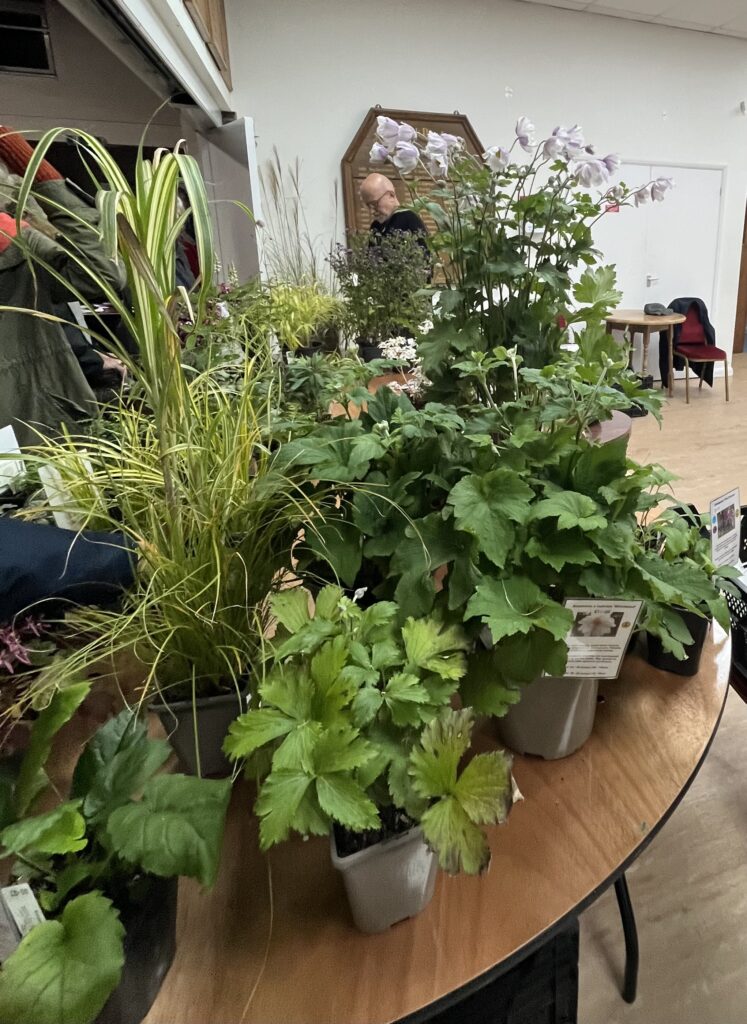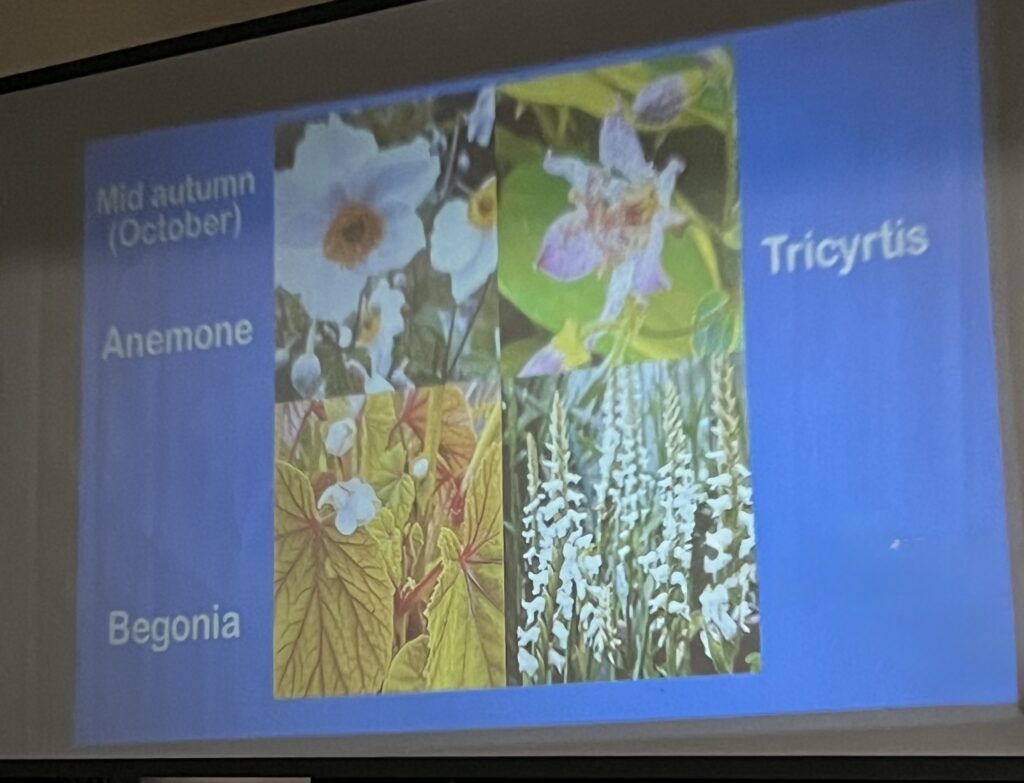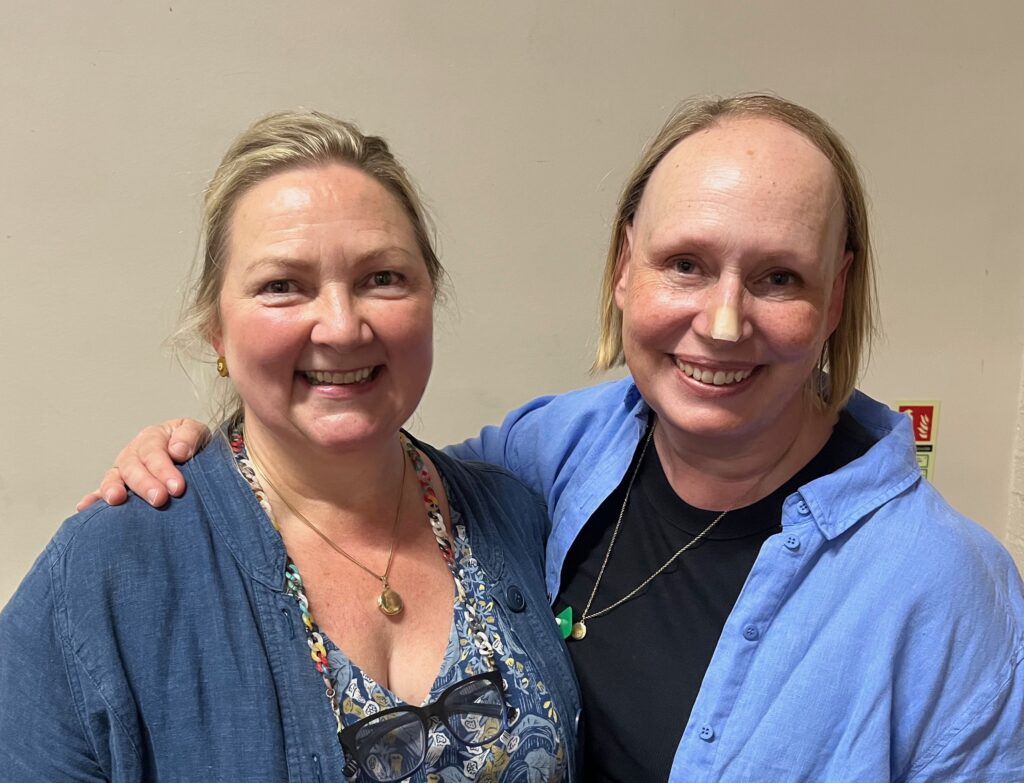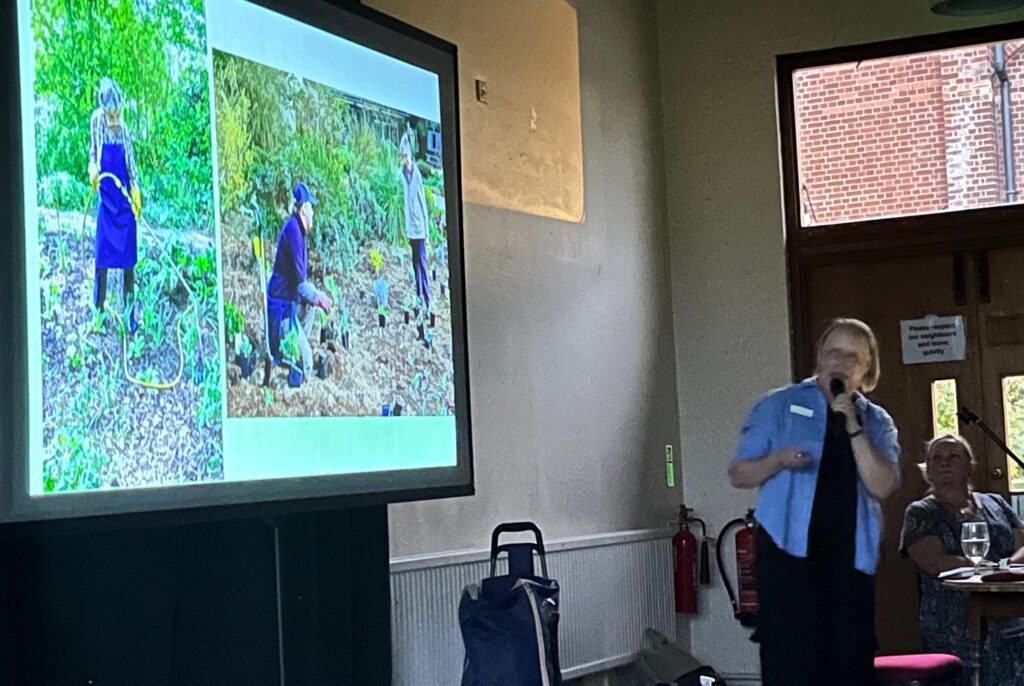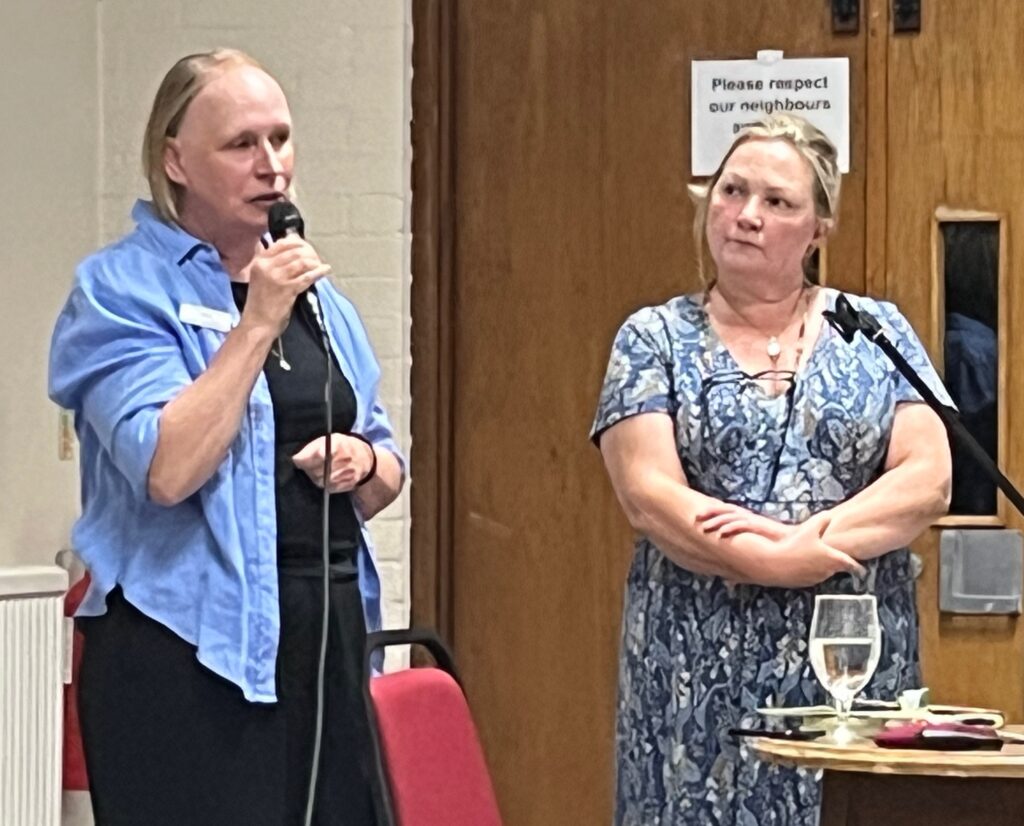
Lynne Moore from Moore & Moore Plants, near Billericay, spoke to another packed meeting of Aldersbrook Horticultural Society on Tuesday 14 October. Moore and Moore is a specialist nursery which specialises in selling shade tolerant and woodland plants. They have won five golds at the Chelsea Flower Show for their wonderful displays and are aiming for their sixth in 2026. Lynne started her talk by stating that growing plants in the shade is not just about growing hostas and ferns but there are many other plants that will grow and flourish in shade and she took us through a number of plants that will grow in shade each month. She talked about the ‘pretties’ – plants that have lovely colourful flowers which can grow in shade as well as emphasising the beauty and attractiveness of different colour foliage which will thrive in shade.
At the meeting Lynne showed slides of plants that will grow in each month of the year – too many to list in one article so below I have set out some examples of the plants for shade that she talked about that will bloom during the year. She showed pictures of grasses that will thrive in shade like the Japanese Hakonechloa, Calamogrostis and Carex Everest and Autumn flowering perennials like Liriope, Japanese Anemone and Actaea simplex. Spring flowering plants like Hellebores, Snowdrops and Pulmonaria will brighten up your garden in February and March, as well as Euphorbia and Erythroniums. For late Spring, Lynne recommended Polemonium, Geum nonna and Geranium Phaeum. During the early summer months Trollius, Penstemon, Astilbe and Silene should all bloom in partial shade, followed later by Thalictrum, Astranthia, and Aruncus.
Please note that some of the above plants require damp soil and it’s best to check on the RHS website to see their growing conditions and how much shade they can tolerate. After the talk members were able to buy plants provided by Moore and Moore nursery – what a treat to have such good quality plants available to buy!!
We hope to organise a trip to the Nursery in March 2026.
Lynne very kindly gives us two documents she referred to in her presentation. To view these documents, click on the links below.
